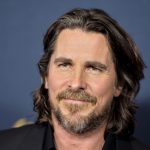Early Life and Ambition
Bernard Arnault, born on March 5, 1949, in Roubaix, France, grew up in a family that valued entrepreneurship and innovation. His father owned a construction company, which provided young Arnault with his first exposure to business. From an early age, he demonstrated an analytical mind and a strong sense of ambition. After graduating from the École Polytechnique, one of France’s most prestigious engineering schools, Arnault joined his father’s company and soon began showing a flair for strategic thinking. He wasn’t content to simply follow the family path; he wanted to create something grander—something that would redefine an entire industry.
The Beginnings of a Business Empire
In the early 1980s, Arnault saw an opportunity in the struggling French luxury industry. At the time, many luxury brands were suffering from poor management and fragmented ownership. He purchased the bankrupt textile company Boussac Saint-Frères, which happened to own the iconic Christian Dior brand. This bold move marked the beginning of his journey in luxury goods. Arnault recognized the immense potential of Dior, and through calculated restructuring and marketing brilliance, he revived the brand’s prestige. This acquisition became the cornerstone of what would later become the largest luxury conglomerate in the world.
Building LVMH: A Global Powerhouse
In 1987, two French luxury houses, Louis Vuitton and Moët Hennessy, merged to form LVMH (Louis Vuitton Moët Hennessy). Arnault saw the merger as a golden opportunity to expand his reach. By strategically acquiring shares and eventually gaining control of the group, he became LVMH’s chairman and CEO. Under his leadership, LVMH transformed into an unparalleled luxury empire, uniting over 70 prestigious brands, including Dior, Givenchy, Fendi, Bulgari, TAG Heuer, Hennessy, and Sephora. Arnault’s strategy was simple yet powerful: acquire iconic brands, preserve their heritage, and modernize their operations to appeal to new generations of customers.
The Art of Expansion
Arnault’s approach to expansion was not just about acquiring more brands; it was about creating synergy among them. He focused on maintaining each label’s identity while providing the resources and infrastructure needed to grow. Through meticulous brand management and innovation, LVMH became a symbol of excellence, craftsmanship, and luxury across the globe. Arnault’s business acumen allowed him to identify brands that had the potential for global appeal. He turned once modest labels into international powerhouses, all while ensuring that exclusivity and craftsmanship remained at the core of their appeal.
Bernard Arnault’s Leadership Philosophy
Arnault’s leadership style is characterized by precision, creativity, and long-term vision. He believes in combining artistic talent with strategic business planning. While many CEOs focus on short-term profits, Arnault emphasizes sustainability and brand legacy. He nurtures creativity within LVMH by empowering designers and creative directors, allowing them to innovate freely while maintaining the group’s luxury standards. His management philosophy balances the emotional allure of fashion with the practical demands of global business, making him one of the most effective leaders in the modern corporate world.
Net Worth and Financial Influence
As of 2025, Bernard Arnault is consistently ranked among the world’s wealthiest individuals, often competing with figures like Elon Musk and Jeff Bezos for the top spot. His estimated net worth exceeds $200 billion, a testament to his mastery of the luxury market. Much of his wealth stems from his majority stake in LVMH, which has seen immense growth in recent years due to the global appetite for premium products. His fortune represents not only financial success but also the dominance of European craftsmanship and luxury in a world increasingly driven by technology and consumer culture.
Personal Life and Family Involvement
Despite his immense wealth and influence, Bernard Arnault leads a relatively private life. He is married to Hélène Mercier, a renowned Canadian pianist, and together they have raised a close-knit family. All five of his children are involved in various aspects of the LVMH business, each overseeing different brands within the group. This family involvement ensures the continuity of Arnault’s legacy and the preservation of his vision for the future. His ability to balance family and business has been one of the key factors behind the stability and consistency of LVMH’s leadership structure.
Philanthropy and Cultural Patronage
Beyond business, Arnault is known for his contributions to art and culture. He is a passionate art collector and a major supporter of contemporary artists and institutions. One of his most significant contributions to the arts is the creation of the Fondation Louis Vuitton in Paris, a cultural landmark dedicated to promoting modern art and creativity. Through this foundation, Arnault has demonstrated his belief that luxury and art are deeply interconnected, each inspiring and elevating the other. His philanthropy extends to education, architecture, and humanitarian causes, reflecting his broader vision of social responsibility.
Innovations and Market Strategies
Arnault’s success also stems from his ability to anticipate market trends. He understood early on that luxury would not be limited to fashion but would extend into experiences, technology, and sustainability. Under his guidance, LVMH has embraced digital transformation, enhancing online sales while maintaining an aura of exclusivity. The company has also made significant strides in sustainability, promoting ethical sourcing and environmental responsibility. By blending traditional craftsmanship with modern technology, Arnault has ensured that LVMH remains relevant to new generations of consumers who value both heritage and innovation.
Challenges and Resilience
Like any great entrepreneur, Bernard Arnault has faced his share of challenges. From economic recessions to changing consumer behavior, he has navigated numerous market disruptions with strategic foresight. His ability to adapt to global crises—such as the COVID-19 pandemic—demonstrates his resilience and leadership strength. During difficult times, LVMH diversified production, even manufacturing hand sanitizers and medical supplies, proving that luxury brands can play a vital role in global recovery efforts. Arnault’s adaptability and decisiveness have reinforced his reputation as a leader who thrives under pressure.
The Legacy of Bernard Arnault
Bernard Arnault’s impact on the global luxury industry is immeasurable. He has transformed LVMH into a cultural and financial powerhouse that defines modern luxury. His vision has reshaped how the world perceives elegance, quality, and craftsmanship. Beyond business, his influence extends to art, architecture, and culture, enriching the global creative landscape. Arnault’s legacy lies not only in his immense wealth but in the empire he built—an empire rooted in passion, precision, and timeless beauty.
Conclusion: The Emperor of Elegance
Bernard Arnault’s journey from a young entrepreneur in northern France to the head of the world’s largest luxury conglomerate is a story of determination, intelligence, and vision. His empire stands as a testament to the power of innovation and heritage combined. Through decades of leadership, he has proven that luxury is more than a business—it is an art form, a statement of excellence, and a reflection of human creativity. With his continued influence in fashion, business, and culture, Arnault remains a symbol of refined ambition and enduring success. His life story serves as an inspiration to entrepreneurs worldwide, illustrating that with vision, persistence, and imagination, one can redefine entire industries and leave a lasting mark on the world.

Starsfame delivers accurate celebrity news, exclusive updates, and inspiring stories about your favorite stars.











